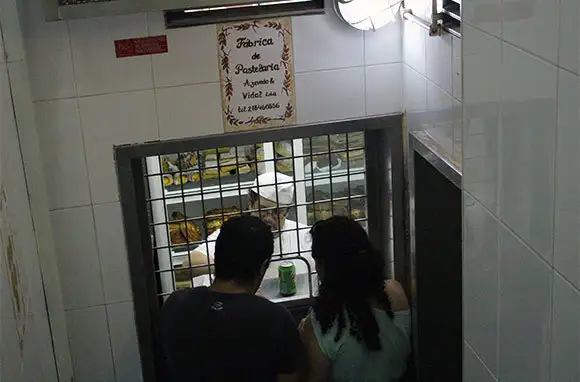
From local holes-in-the-wall to trendy clandestine establishments, travelers to Europe have plenty of ways to veer off the tired tourist track when they dine. At these hidden spots, whether a secret late-night bakery in Lisbon or a dynamic pop-up in London, diners can immerse themselves in the local culture and be in the know despite being far from home.
On a recent stopover in Lisbon, I met up with Frederico Duarte, Lisboeta and coauthor of Fabrico Proprio, a book (and ongoing project) on the design of Portuguese pastry. He led me on a late-night trek in search of the city’s underground bakeries, an adventure that became the inspiration for this story on hidden eats in Europe.
Read on to discover these pastry havens, plus lesser-known dining spots in other great European cities.
Like this story? Join the 1 million other travelers who read our free Deal Alert newsletter. It’s full of our best tips, trip ideas, and travel deals. Subscribe here today!
Image Gallery
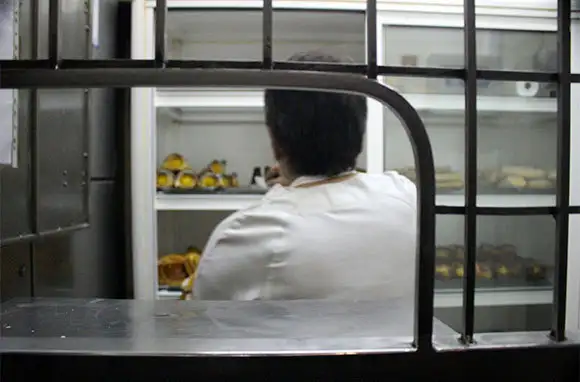
Bolos da Madrugada, Lisbon
Behind unmarked doors, down seemingly barren alleys and stairwells, lie the bolos da madrugada, or "cakes at dawn" bakeries. The only way to find them is to either be in the know or follow the scent of freshly made pastry as you walk the streets of Lisbon. Open generally from midnight to 6 a.m. (with some variation), these secret pastelarias bring energy to the city in the otherwise quiet wee hours. As Duarte put it, "These places keep Lisbon alive. Not just by feeding its people—from nighthawks to early birds, from clubbers to policemen—but mainly by showing the city's rhythm, and proving our appetite for pastries never really stops." Right on cue, as we stood on the stairs leading to Pastelaria Azevedo e Vidal near Praca do Chile in the Arroios neighborhood, a police officer walked past us down to the grated counter and purchased a cake from the selection of traditional favorites—among them pasteis de nata (small custard tarts) and egg-cream filled bolas de berlim—as sustenance for the night shift.
Panificacao Reunida De Sao Roque, which is part of a larger pastry factory on Rua da Rosa in Bairro Alto, is another spot worth a stop. There's also a shop in Graca, which Duarte described as being located on the "tiny street with the Indian restaurant." Take a walk through the area and follow your nose; you just might find it.

Bolos da Madrugada, Lisbon
Behind unmarked doors, down seemingly barren alleys and stairwells, lie the bolos da madrugada, or "cakes at dawn" bakeries. The only way to find them is to either be in the know or follow the scent of freshly made pastry as you walk the streets of Lisbon. Open generally from midnight to 6 a.m. (with some variation), these secret pastelarias bring energy to the city in the otherwise quiet wee hours. As Duarte put it, "These places keep Lisbon alive. Not just by feeding its people—from nighthawks to early birds, from clubbers to policemen—but mainly by showing the city's rhythm, and proving our appetite for pastries never really stops." Right on cue, as we stood on the stairs leading to Pastelaria Azevedo e Vidal near Praca do Chile in the Arroios neighborhood, a police officer walked past us down to the grated counter and purchased a cake from the selection of traditional favorites—among them pasteis de nata (small custard tarts) and egg-cream filled bolas de berlim—as sustenance for the night shift.
Panificacao Reunida De Sao Roque, which is part of a larger pastry factory on Rua da Rosa in Bairro Alto, is another spot worth a stop. There's also a shop in Graca, which Duarte described as being located on the "tiny street with the Indian restaurant." Take a walk through the area and follow your nose; you just might find it.
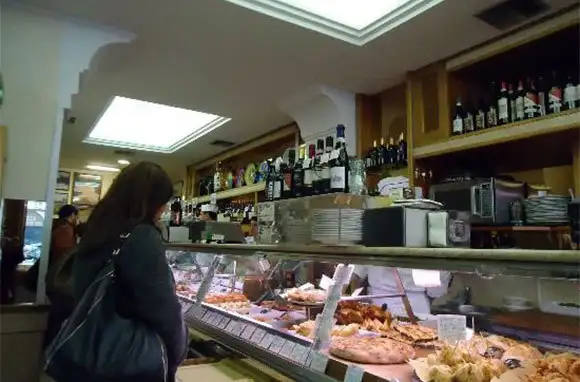
Tavole Calde, Rome
While most visitors to Italy opt to dine at the trattoria or ristorante, few know about a casual type of eatery where you can nosh on high-quality food at an exceptional value. With an emphasis on home cooking, a tavola calda, which translates into a "warm table," is a type of self-service snack bar or diner where you can enjoy hot (or cold) bites, either inside at a few tables or as takeaway to eat later. According to Tobin Hartnell of Cultural Cache Tours, "They would have a variety of home-style cooked foods, as well as some salads. Typically, you'd choose a bit of this and a bit of that, and pay by weight." At these unassuming establishments, you can grab a quick meal and spend as little as 10 or 15 euros on it.
In Rome, Hartnell recommends Volpetti Piu, which is located just across from Trastevere on Via Volta and specializes in pizzas, pastas, soups, and fried nibbles, all served at a counter. Bar La Licata, owned by two brothers and located in the heart of the city, is another local favorite.
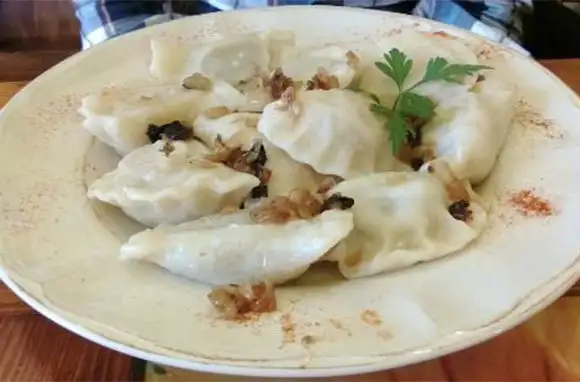
Bary Mleczne, Krakow
In Krakow, locals seek out comfort foods like pierogi and kielbaski, but without any frills. Of their frequented dining spots, the bar mleczny, which translates into "milk bar," is a popular choice. These cafeterias were established during communist times to provide affordable, government-subsidized meals to workers who didn't have on-site canteens at their jobs. The menus were all vegetarian and focused on homemade dairy-based foods (as well as omelets and dishes like pierogi). As communism crumbled, so did the milk bar; however, the simple eating place has been making a comeback in recent years and remains a great find for authentic Polish cuisine if you know where to look.
Flisak on Kosciuszki Street near Wawel Royal Castle offers traditional pierogi with cheese and potatoes. Other milk bars include Warszawianka on Juliana Dunajewskiego and Bar Mleczny on Grodzka. While not a milk bar specifically, Pierozki u Vincenta (Pierogi at Vincent Place), located on Bozego Ciala Street in the Kazimerz neighborhood, also serves dozens of different types of pierogi and is relatively unknown to tourists. Going along with the Cold War theme, Blue Nyska dishes out kielbaski until dusk from a converted communist-era van parked at Market Hall on Grzegorzecka Street. It's a popular haunt for students, actors, and night-shift workers. Ambasada Sledzia (Herring Embassy), on Stolarska Street across from the U.S. consulate, sells pickled herring and vodka shots well into the morning hours.
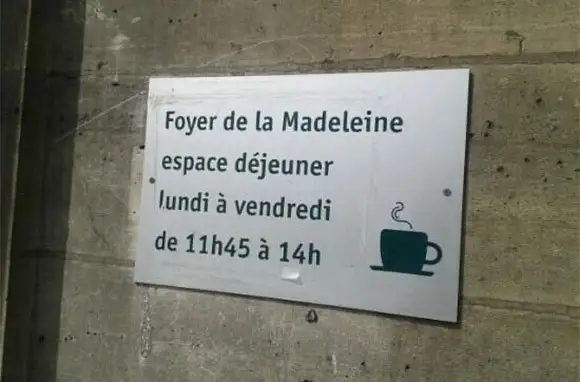
Restaurants Associatifs, Paris
Underneath the Madeleine, a famous church in Paris' 8th arrondissement, lies a crypt with a secret unknown even to most Parisians. Not only is Le Foyer de la Madeleine literally hidden behind a small side door, but it's considered a restaurant associatif, or an alternative eatery that aims to feed people without profit, is socially conscious, and employs a volunteer staff. At Le Foyer, this mission dates back to 1968, when the parish offered lunches to people in need. Today, anyone is welcome. An annual membership card costs €5 and a fixed-price lunch—including choice of entree, plat garni, and cheese or dessert—is just €8 (nonmembers pay slightly more). If the atmosphere, vaulted ceilings, and quality French food weren't enough reasons to visit, knowing that the small price of your meal goes to helping others will surely seal the deal.
Restaurants associatifs can be found throughout Paris. Kiwizine in Belleville is a creative space offering organic coffee and cuisine; membership costs €2. Le Moulin a Cafe in Montparnasse was founded in 2006 and serves drinks, homemade cakes, and cheese and charcuterie plates; basic annual membership costs €10. And Diet Ethique has been focusing on affordable, healthy meals since 2008, with menu items ranging from €3 to €14.
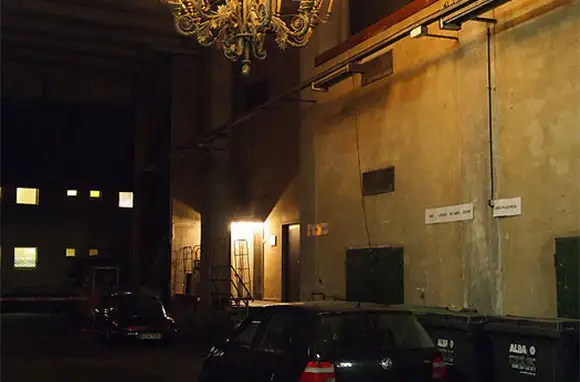
Underground Restaurants, Berlin
For years, Berlin has been solidifying its place as Europe's capital of hip and cool. And its dining scene, with a current trend of intentionally creative (and secret) restaurants, helps fuel that image. Enter Cookies Cream on Behrenstrasse in the city's Mitte borough. Behind a plain wooden door, in a hotel loading bay, the upscale dive defies its surroundings. And you wouldn't know it was there unless someone told you (or you became suspicious of the incongruous chandelier dangling in the alleyway). Once there, you must ring a bell and walk through a nightclub to get to the warehouse-turned-dining-room. The all-vegetarian menu focuses on seasonal ingredients from regional farmers and collectives, and three-course meals cost €36.
Nearby, beneath the S-train bridge at Friedrichstrasse station, Cantina in der Bar Tausend has no sign but is a lively restaurant (and nightclub) serving Asian and Ibero-American cuisine. On a high floor of a nondescript office building behind an auto-parts store, Solar, in the Kreuzberg borough, offers cocktails, fresh menu items, and views of the Berlin skyline.
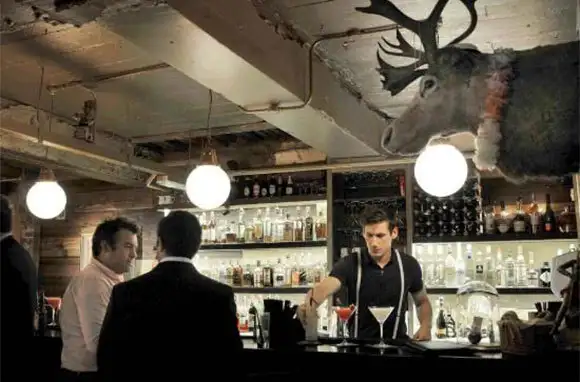
Speakeasies and Pop-Ups, London
In some destinations, hidden eateries are just that: off-the-beaten-path establishments left undiscovered by throngs of tourists. In others, like London, they are purposefully hidden, with the aim of providing creative, unusual experiences while allowing you to feel like you're in on the "secret." Here, these veiled spaces come in two major forms: speakeasies (unmarked restaurants, often with a password) and pop-ups (temporary restaurants), and all with uniquely British twists.
To get into The Mayor of Scaredy Cat Town, part of The Breakfast Club cafe on Artillery Lane, you have to address the staff and ask to see the mayor. Only then are you allowed to enter through the Smeg fridge door. The menu ("The Mayor's Cat Food") features standard gastropub fare. At Evans & Peel Detective Agency, making an "appointment" to discuss your "case" is preferred, though a limited number of drop-ins are welcome.
From bohemian to refined (see The Art of Dining), pop-ups have sprouted up all over the city. Mostly broadcast via word of mouth or social media, these moving-target restaurants, which tend to come and go, can take place in private homes, rooftops, antique stores, or pretty much anywhere. In a similar fashion, Disappearing Dining Club's Back in 5 Minutes, a restaurant and supper club disguised behind a clothes shop, offers walk-in meals on certain days of the week.
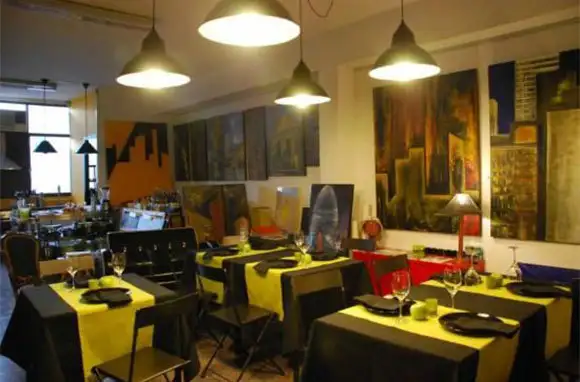
Restaurantes Clandestinos, Barcelona
When layoffs and high taxes strike, Spaniards get savvy and turn to covert entrepreneurship, even in the restaurant world. Chefs are secretly putting tapas and other local dishes on tables—but their fees are being paid under the table though unlicensed restaurants, especially in food-rich cities like Barcelona. Spain might have the highest unemployment rate in Europe, but these restaurants are creating opportunities. According to The Sunday Times, "In Barcelona, discreet culinary hotspots, though hard to find, are popping up everywhere. Underground hair salons, jazz clubs, and flamenco halls are also said to be thriving." Now part of the city's culture, these clandestine venues (legal or illegal), often with creative approaches, typically have no listed addresses and attract diners through budget consciousness and intrigue.
La Contrasenya, an art-studio-turned-cooking-workshop, offers meals several nights per week; just be sure to know the password. Located in an apartment, Comedor Clandestino, or "secret kitchen," focuses on fresh market cuisine as well as wine tastings and strives to immerse guests in the local culture. And Kokun, a "gastronomic social club," presents a Catalan tasting menu centered on seasonal foods for €45 (including wine). For more options, request an invitation from Urban Secrets, Barcelona's clandestine gastronomical community.
Know of any hidden restaurants in Europe? Reveal them in the comments below (that is, if you're willing to share).
You Might Also Like:
- How Well Do You Know Your European Cuisine?
- A Sweet Trip to Paris (in Pictures)
- Foods You Want in Summer
Like this story? Join the 1 million other travelers who read our free Deal Alert newsletter. It's full of our best tips, trip ideas, and travel deals. Subscribe here today!
We hand-pick everything we recommend and select items through testing and reviews. Some products are sent to us free of charge with no incentive to offer a favorable review. We offer our unbiased opinions and do not accept compensation to review products. All items are in stock and prices are accurate at the time of publication. If you buy something through our links, we may earn a commission.
Top Fares From Columbus, OH
Today's Top Travel Deals
Brought to you by ShermansTravel
Shop and Save with Country Inns...
Patricia Magaña
 Hotel & Lodging Deals
Hotel & Lodging Deals
$229 -- Chicago: Discounted Rates and...
Francesca Miele
 Hotel & Lodging Deals
$229+
Hotel & Lodging Deals
$229+
$188 -- Honolulu: Save on Oceanview...
Abigail Lamay
 Hotel & Lodging Deals
$188+
Hotel & Lodging Deals
$188+



